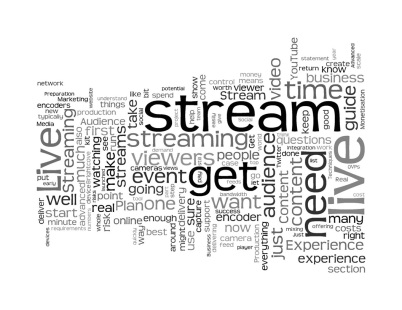@McDawg tbh, I find liveblogs more useful than livestreams. But I’m oldfashioned
— Frank Norman (@franknorman) July 18, 2016
This is something I’ve dabbled with a couple of times. Firstly, briefly at Repository Fringe (Edinburgh) 2015 and also earlier for UKSG in 2014 e.g., here and here. Being part of a team certainly helped given the size of this event.
One person I know who has much more experience than me (and most) in this is Nicola Osborne, Jisc MediaHub Manager / Digital Education Manager at EDINA. You can view her work here.
Interesting post Martin.
I’ll try to keep this as brief as possible. That wasn’t possible, so here goes.
From an general subjective Conference perspective namely focusing on the virtual attendee angle, I think one has to consider many variables such as:-
A) What subjects are you going to cover?
B) Who is your “target audience”?
C) How will you make them aware of the event?
D) Is it free or fee (#scio10 was $175 – #solo09 – £10 in person or £10 for Second Life)
E) How interactive do you wish to make it be for virtual attendees?
F) How does one tackle sessions that involve unpublished data?
etc.etc.
Now since we only appear to be able to use a max. of four url’s in the comments feed on NN at the moment, I’ll choose ’em sagaciously.
On Jan 10th, I posted this on my blog (sorry, link rot) before virtually attending last weekend’s events in North Carolina.
Based upon past experience(s), the thing that I was really looking forward to was the live-streaming/chat-room aspect of the Conference. Despite the much applauded wi-fi connection they had set up (extremely important these days and secured internet access to all present) c/o company SignalShare, it became clear fairly early on that there was -phlegm- a problem with the live-stream.
++ACTION POINT++ Must find out what went wrong so that we can learn from this for the future.
Each chunk (hourly sessions) of the event was split into five parallel sessions (Rooms A to E) and the aim was to live-stream content from all discussions in D & E. This meant that ahead of the event, virtual attendees could chose which sessions they wanted to attend. In the end alas, over the whole weekend, only about 1.5 hours worth was streamed and with very little notice.
I found this rather disappointing I have to say as discussed with Martin over the weekend (can a DM Twitter discussion be classed as a “personal communication”?) so time to follow events in other ways. I was pretty much glued to the #scio10 Twitter feed all weekend and I very much agree with AJCann’s comments above.
==
I like Martin’s Twitter suggestions !!
—
Richard Grant & I covered various aspects of Conference event coverage during a podcast we did with Mike Sefang & David Wallace (link rot, try here) in July 2008. (relevant section starts at 19’30”) As a result of that discussion and with the permission of NPGs Timo Hannay, Richard recorded audio of the Wrap-Up Panel: Embracing change: Taking online science into the future at Science Blogging 2008: London which was uploaded to web within a few hours. Cool….
As discussed with a few NN staffers, even though all sessions were video recorded, due to technical issues, none of the NN files ever appeared on the web. That said, Cameron Neylon recorded and from memory live-streamed (and also self archived) some of the sessions via his laptop. Also cool.
—
An observation from “Science Blogging 2008, North Carolina”:http://scienceblogs.com/clock/2008/01/science_blogging_conference_vi.php is as follows. Similar to what Cameron did in London, that year, a couple of individuals, Wayne Sutton and to a lessor extent, Deepak Singh, live-streamed events from their laptops. Within the space of a week (after that, little interest), their uploaded files had been viewed over 15,000 times which I think was pretty impressive. Observation from Science Online London: 2009. Video footage of 7 sessions were uploaded c/o NN’s Joanna Scott 2 weeks after the event. Total views ~ 500.
My take on this from this data is that if you are going to attract the attention of virtual attendees using video format, it needs to be instant ideally, or delayed by a day or two at the most, before interest fades. The same I guess applies to audio. As to Second Life, I personally have limited experience of this platform so am unable to comment. One for Lou & Jo to discuss as Lou has indicated earlier.
As Cameron Neylon has mentioned elsewhere on teh interwebs, as matters stand, livestreaming using a wi-fi connection is still very 50/50 in success terms. Whilst livestreaming from this years Science Online UK event shouldn’t be completely ruled out (we should at least try a secure [not wi-fi] web connection, IMO) all things considered, I have to say that I’m pretty much with Martin as per the last para of his post.
—
One final point. I really like the idea of Science Online 2010: London being a two day event, yay !! The meatspace socialising aspect of such events is a real draw and something that you miss by non physical presence. I can’t really add to Stephen’s comments above in this regard.
Oh waits, I still have a link final up my sleeve. Whilst I was unable to attend the pre Science Online 2009: London party in person, I did manage to fling together the following montage. Apols for re-posting here but I thought it was rather cool and in doing something like this, it gives virtual attendees a flavour of the social aspect of events, which I think is not “essential” but of general interest.
Oh bums, I appear to have have ran out of links so let’s see if I can post this without the “missing link”.
Oh sh*te, we can’t embed stuff from Vimeo here, so “el missing linky is here.”:http://vimeo.com/6306956
